Sage grouse are finally showing up for mating season
Published at | Updated at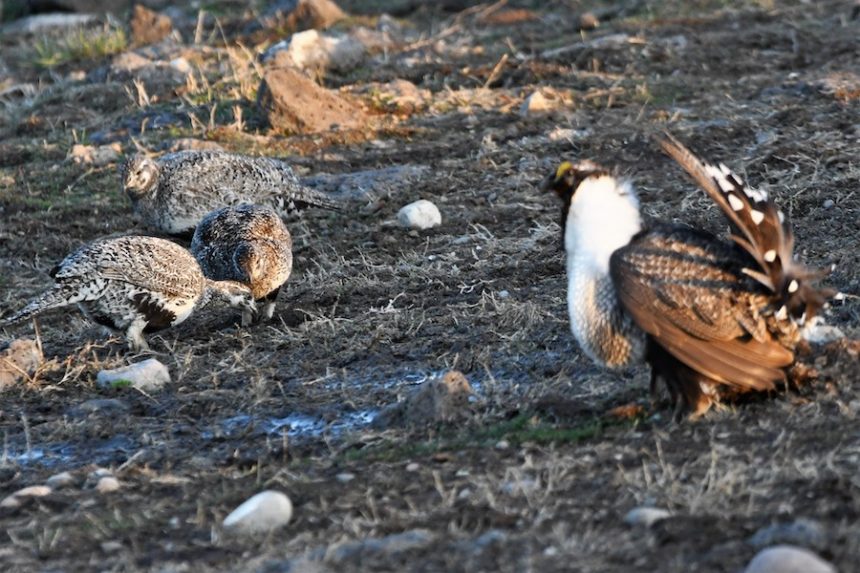
DUBOIS — My ice fishing clothes were necessary as I sat in my truck with my window rolled down one early morning, listening to the incoming flights of the greater sage grouse as the cocks came into their lek.
Even before there was enough light to see them, I heard them advertising their availability to the hens as they filled their huge air sacks before releasing the air. The “plopping” sounds along with the squeaking of the air sacks rubbing together was a welcome sound to me. It had been almost a year since I had witnessed these procreational rituals.
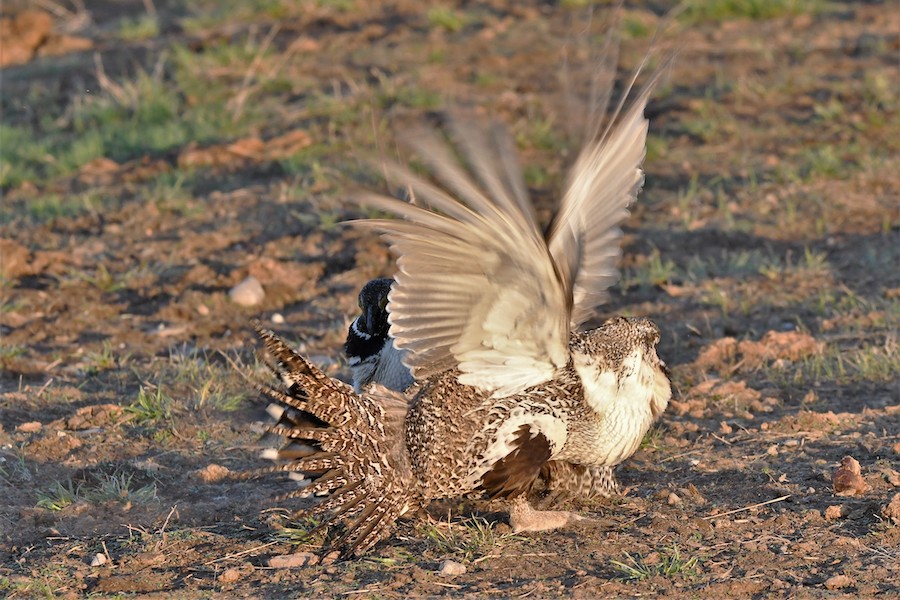
Occasionally, I would hear the “clucking” of two males followed by the sound of them beating each other with their wings as they fought for supremacy of the lek, their traditional breeding ground.
The heavy sound of cocks flying onto the lek was soon replaced by the lighter sounds of the hens arriving.
In the pre-dawn light, when I could barely make out the displaying males, a small herd of elk walked through them, but the large wild chickens paid no attention to them. Arriving early at the lek and parking as near to the center of it as I could had paid off. To the displaying cocks and their girlfriends, the truck was just a big rock with a hole under it which several birds walked under it heading for a more desired spot.
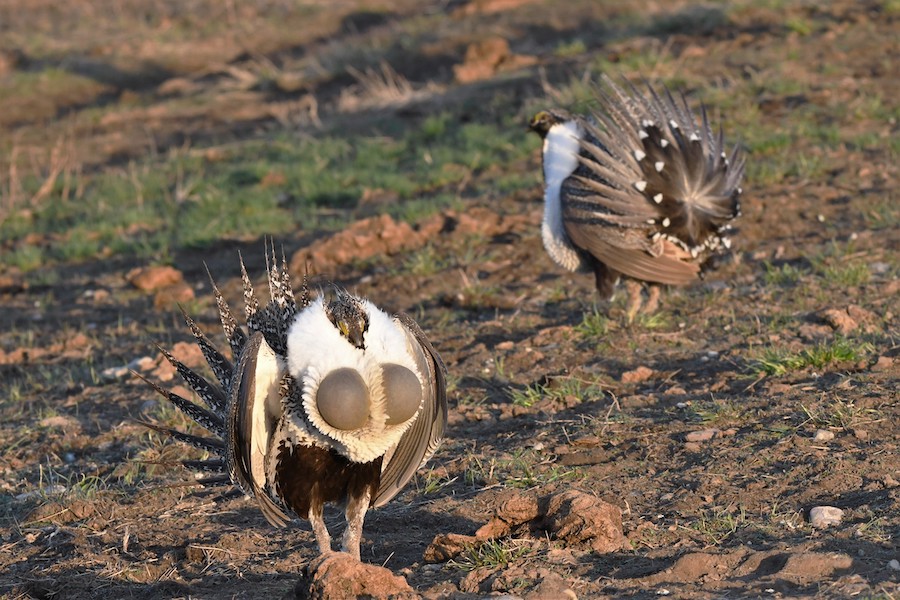
As the sun came up, I counted 114 displaying cocks in an area of 100 square yards, with a few of them out on surrounding ridges. It was one of the largest gatherings that I have seen in six or seven years and was a very welcome sight.
I was able to get pictures of their activities, but I did not witness any copulation, probably due to the late melting of the snow and the cold northeast breeze that was blowing.
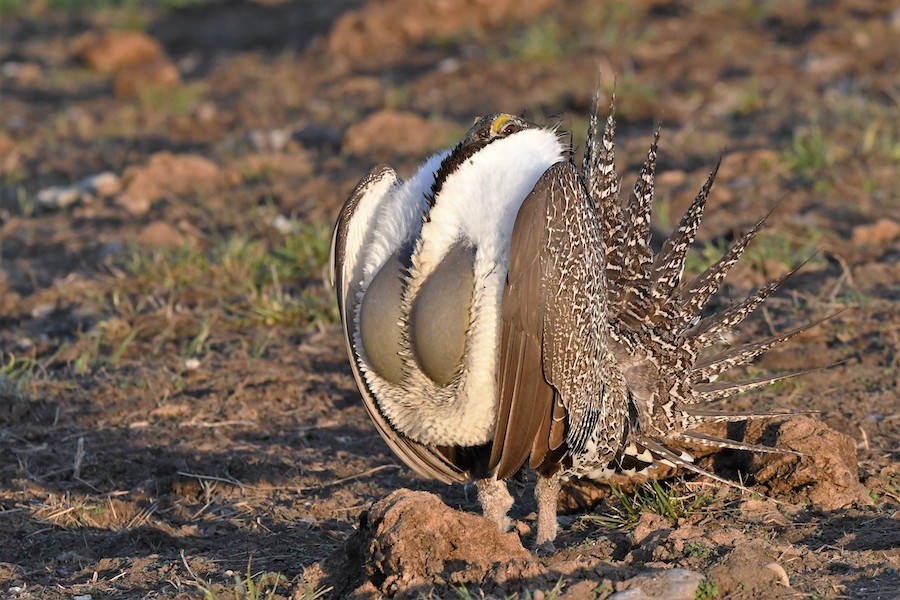
This lek was about six miles east of Dubois on the road that heads toward Kilgore. Two other leks were also located just off the road. I used to guide a bus-load of birders along this route during the Dubois Grouse Days before it was discontinued. As of May 2, signs at the beginning of the road near Dubois warns that the road is still not open all the way to Kilgore.
Another great place to witness the sage grouse show is along Red Road, which runs from the St. Anthony Sand Dunes to Kilgore. There are several nice leks to see along that road.
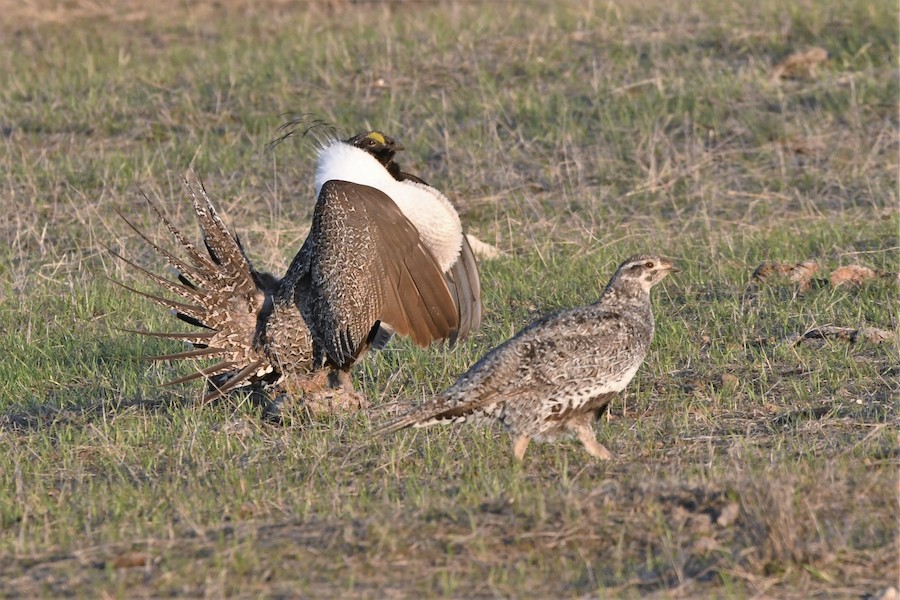
Three weeks ago, when the grouse traditionally start lekking, I visited the leks east of Dubois and did not see a single sage grouse, as there was still three to four feet of snow on the ground. I was informed by Idaho Fish and Game personnel that the hard winter had forced most of the grouse to an area west of Roberts.
At that time, we wondered if they would make it back to their traditional leks on the high desert. They appear to have made it back to some of the leks, and I wonder if the high number on that main lek is caused by the fields of snow in the higher elevations. Hopefully, the high numbers on the lower leks indicates that the numbers are recovering.
The sage grouse will probably continue displaying on the leks for another two to three weeks, or until the hens start sitting on the nests. They will then scatter around the high desert, sagebrush-covered hills next to the edge of the thick forested mountains.
If you have never witnessed one of Southeastern Idaho’s spring rituals, now is the time for an early-morning drive to Dubois and then on toward Kilgore for a drive along Red Road. Drive slowly once you see them because their minds are on something other than avoiding vehicles. An eight-pound bird can take out a windshield.
Living the Wild Life is brought to you by The Healing Sanctuary.


